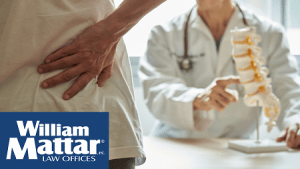
The impact of a car accident can cause severe injury to vehicle occupants. The mechanism of injury can vary widely, but when the force of the impact travels through the car, some of that force is absorbed by its occupants. When the force of the impact travels through a vehicle occupant, it can cause that person’s body to move suddenly and in unnatural ways, causing injury. The nature and extent of this injury will depend on several factors.
Preexisting and Degenerative Conditions
These factors include but are not limited to any preexisting and degenerative conditions. These types of medical conditions can predispose people to aggravation or exacerbation of the preexisting condition. New York law recognizes a principle called the “eggshell plaintiff” rule. Under this principle, even if the injured person has a medical condition that is not directly related to the trauma of the collision, and that medical condition becomes symptomatic or otherwise worsens, the injured person can make a claim for personal injuries. While the at-fault motorist will not be responsible for the preexisting medical condition itself, he or she will be responsible to the extent it is made symptomatic or worsens.
The Mechanism of Injury
Another factor that can possibly influence the nature and extent of the injury is the mechanism of injury. While some people believe that the severity of property damage is an indicator of the mechanism of injury, this is not entirely true. While a collision that completely “totals” the involved vehicles can certainly have the capacity to severely injure vehicle occupants, the mere fact that property damage appears minor does not necessarily rule out severe injuries for occupants. The purpose of car bumpers and fenders is to not necessarily to protect vehicle occupants, but instead to protect the integrity of the vehicle itself. For this reason, when car bumpers and fenders serve this purpose, the force of impact is usually transferred into the bodies of the occupants, causing injury.
Diagnosis and Prognosis
After a car accident, it is not unusual for injured motorists to treat with several different providers, garnering many different diagnoses and prognoses. Experiences can differ, but it is not uncommon for an injured motorist to appear at an emergency department or urgent care facility following the collision, and then follow up with a primary care doctor a day or two later, who will advise the injured motorist to rest and start a course of conservative treatment. This conservative treatment could entail physical therapy, massage therapy, or chiropractic treatment. If symptoms do not improve after a time, the injured motorist could wind up with a spine specialist like a neurosurgeon or orthopedist. Throughout this time, diagnoses can progress from a cervical strain to a herniated disc, and so forth, depending on the diagnostic tools employed. In other words, while the emergency department or urgent care facility may order an X-ray—which can identify fractures but is not effective in detecting changes to the soft tissue of the spine—subsequent medical providers may order an MRI or CT scan when symptoms do not abate. These more advanced diagnostic tools can reveal the underlying problem, changing the diagnosis and prognosis.
Hurt In A Car? Call William Mattar.
Put simply, your diagnosis and prognosis after a car accident are fluid things, and will sometimes change during your treatment. If you are injured in a car accident and received a diagnosis from your doctor, call the car accident attorneys at William Mattar law offices. We would be happy to help you obtain maximum compensation, 844-444-4444.
 How can I help you?
How can I help you?